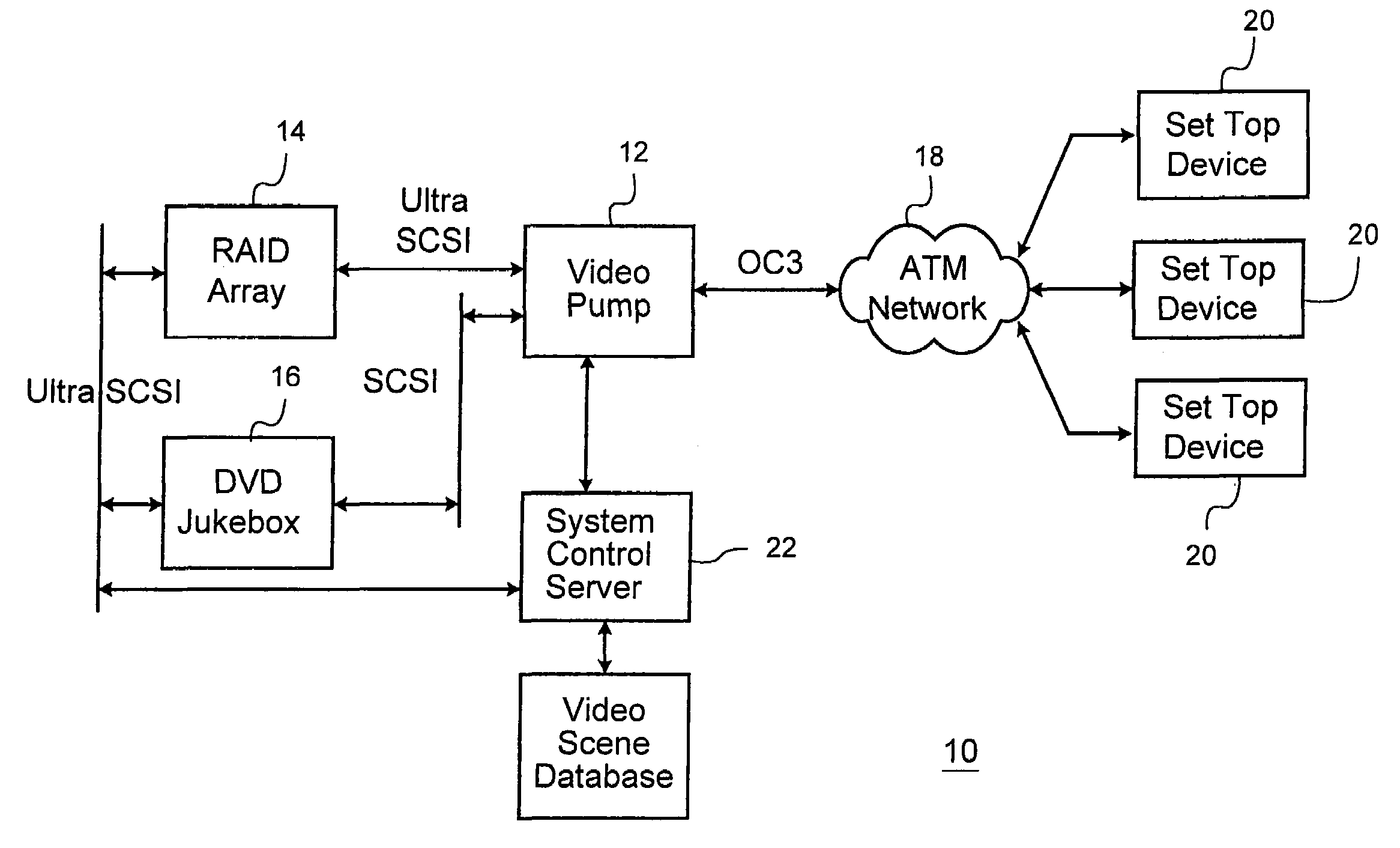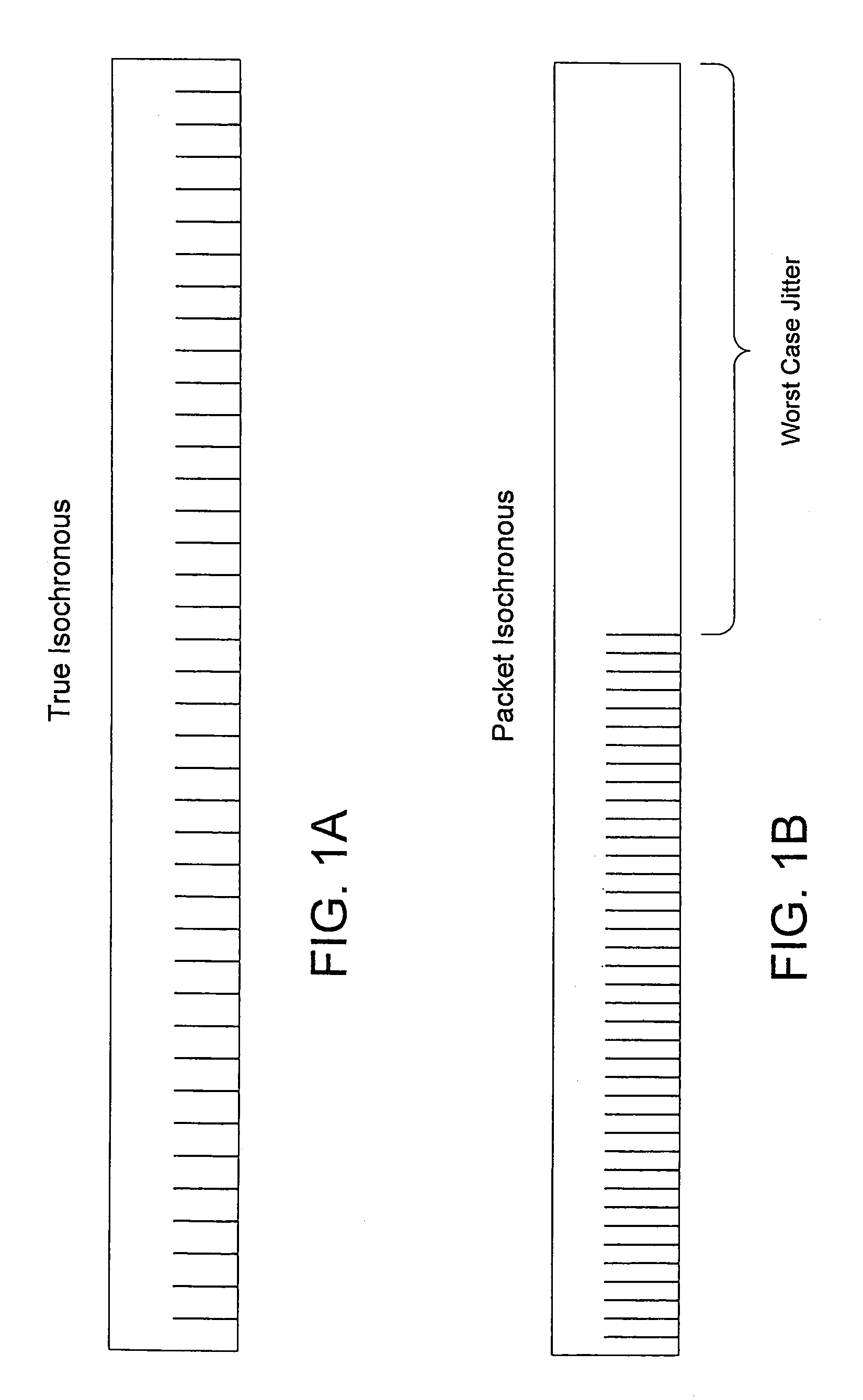Multi-channel video pump
- Summary
- Abstract
- Description
- Claims
- Application Information
AI Technical Summary
Benefits of technology
Problems solved by technology
Method used
Image
Examples
Embodiment Construction
[0030]FIG. 1A illustrates the bit pattern desired for the MPEG stream (isochronous transmission). FIG. 1B illustrates the bit pattern for the same MPEG data stream as it is transmitted in a packet network, i.e., packet isochronous transmission. When the packet is released at precisely the correct time, as illustrated in FIGS. 1A and 1B, each bit after the first bit in each packet arrives early by an increasingly larger amount. The maximum early jitter occurs on the last bit of the packet. Ideally, the release of the next packet will be delayed, so that the first bit of the next packet will be received precisely “on time” by the receiving devices.
[0031]As should be apparent from the description of the related art above, the precise release point of a given packet will not have much effect on jitter as long as the magnitude of the error of actual release versus desired release is small compared to the jitter of the last bit caused by the difference between the network and stream bit r...
PUM
 Login to View More
Login to View More Abstract
Description
Claims
Application Information
 Login to View More
Login to View More - R&D
- Intellectual Property
- Life Sciences
- Materials
- Tech Scout
- Unparalleled Data Quality
- Higher Quality Content
- 60% Fewer Hallucinations
Browse by: Latest US Patents, China's latest patents, Technical Efficacy Thesaurus, Application Domain, Technology Topic, Popular Technical Reports.
© 2025 PatSnap. All rights reserved.Legal|Privacy policy|Modern Slavery Act Transparency Statement|Sitemap|About US| Contact US: help@patsnap.com



